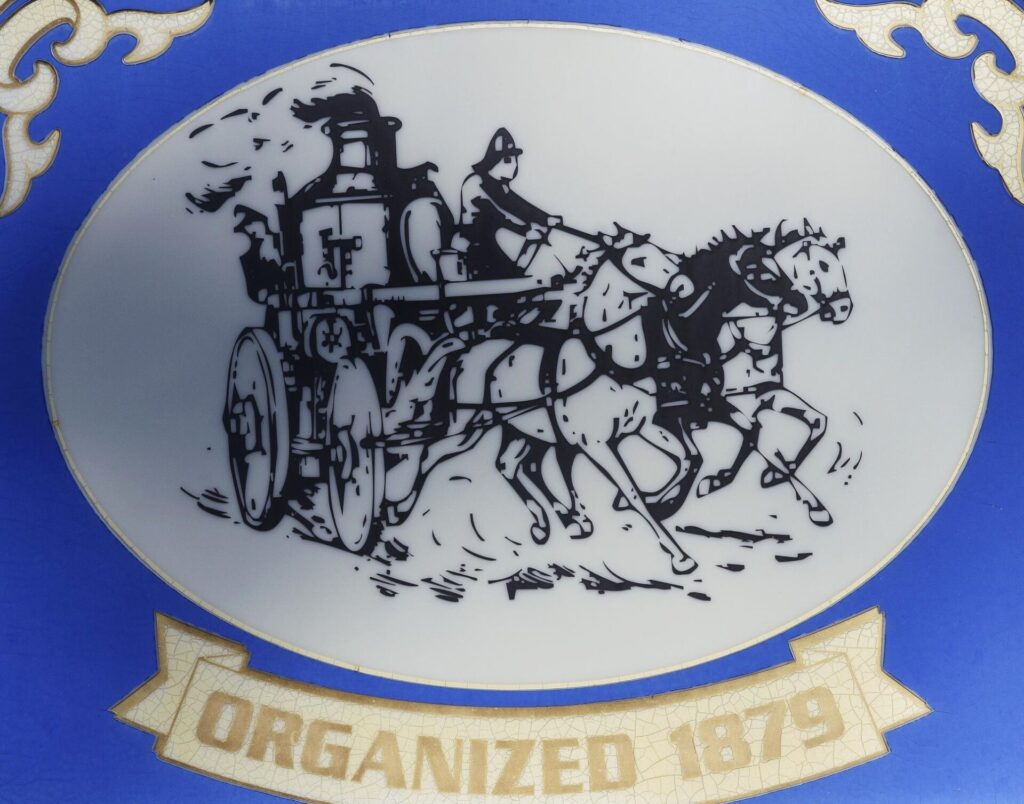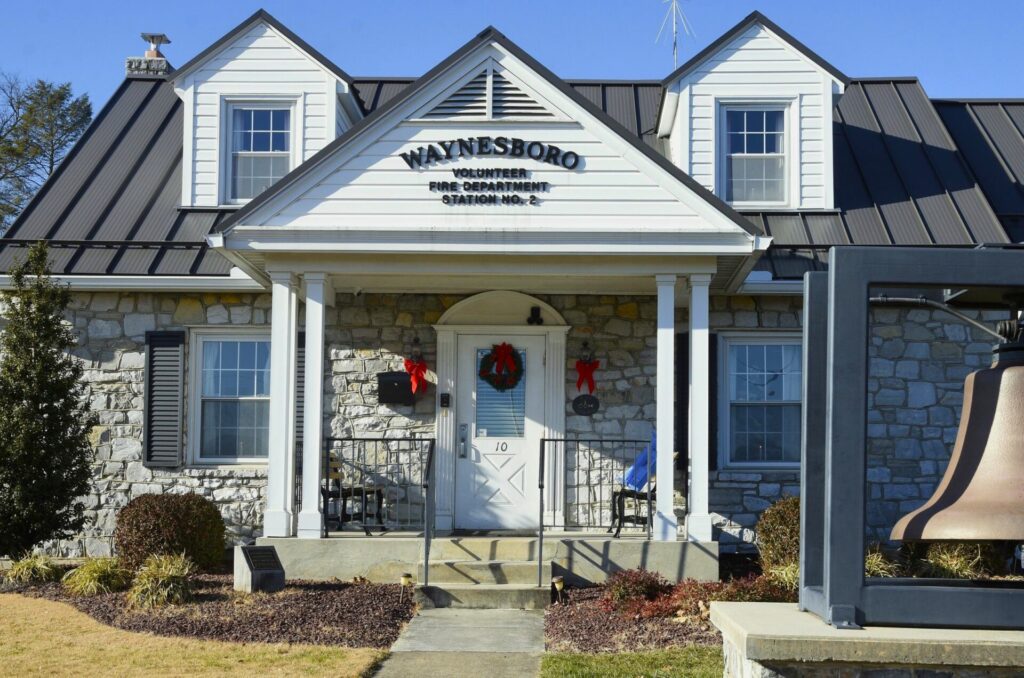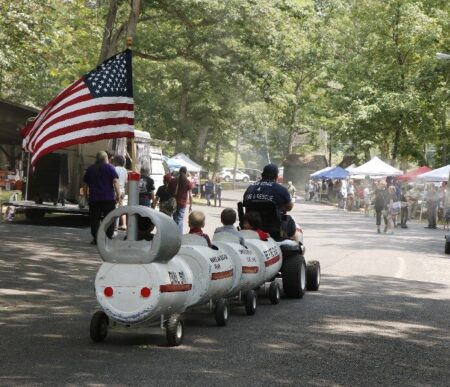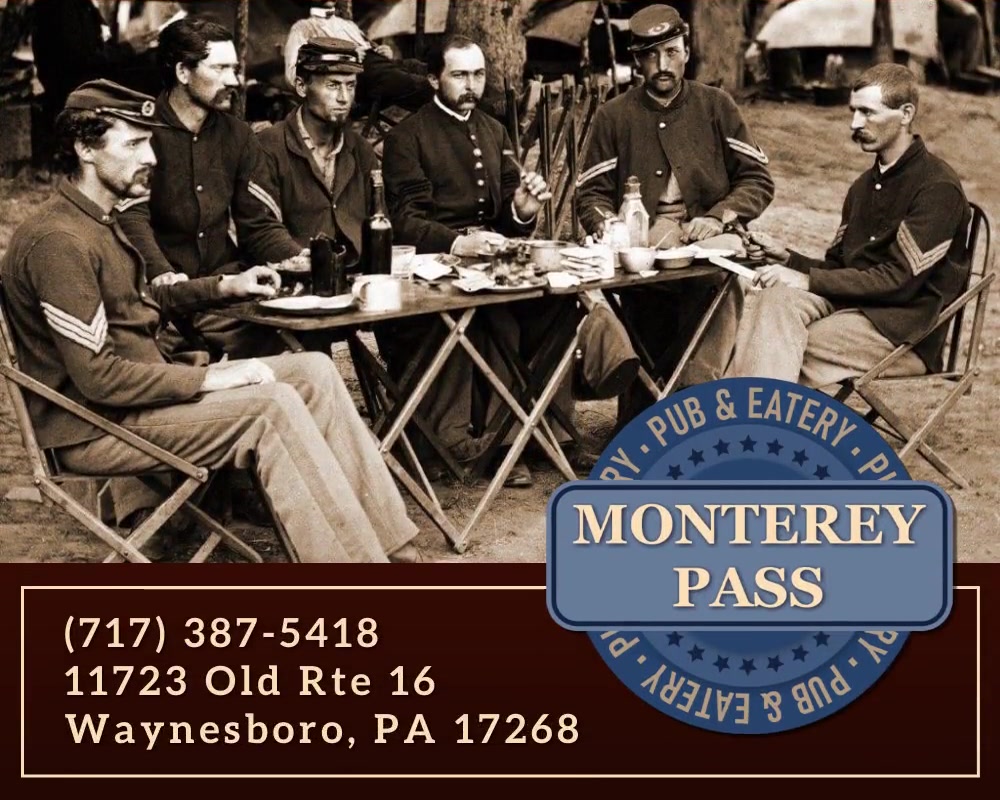Waynesboro begins a new era today in a long history of firefighting. The Waynesboro Volunteer Fire Department (WVFD) will depart the Potomac Street fire station and detach their organization from the Borough of Waynesboro.
Back on September 5, 2023, WVFD announced their intention to officially separate operations, and scheduled their effective termination date for December 29, 2023. Then, the Borough notified WVFD on December 4 to vacate the Potomac Street fire station by December 16; thirteen days earlier than WVFD planned to depart.
In a Press Release issued on December 7, the WVFD asserted that their three-month notice to vacate the station gave them sufficient time frame for an orderly separation. “This sudden notice from the Borough of Waynesboro is causing unnecessary chaos,” the WVFD stated.
The Borough of Waynesboro responded, also with a Press Release, on December 13. Regarding the recent twelve-day notice given to WVFD, the Borough said that the wording of WVFD’s termination letter stated they would separate “On December 29, 2023, or sooner”. The Borough said that “a mutually agreeable separation date was never established”.
The Press Release issued by the Borough also said the December 16 date “was selected to conclude the few remaining items related to the separation before the holidays”. The Borough also stressed that “very little remains to be completed other than the administrative matters. Almost all property of both entities has been exchanged.”
In a phone interview, WVFD Administrative Manager Lori Depies commented about the imminent separation: “We’re giving the Borough exactly what they want. We saw the handwriting on the wall and had to act.”
Depies said the WVFD was initially enthusiastic when Waynesboro hired a new Fire Chief in 2021. Fire Chief Chris Devers arrived from Virginia and had a professional firefighting resume. But after some time elapsed, the volunteers “realized this Fire Chief has no interest in fully utilizing volunteers as a supplement and compliment to the paid Waynesboro staff”, said WVFD spokesperson Depies. She stated that WVFD was regularly excluded from training and decision making. “If we’re not wanted, then we need to go.”
The WVFD has announced their intention to affiliate their services with Washington Township.

On December 11, 2023, WVFD elected a new Fire Chief; John Beck. They also chose the following officers: Casey Rock: Deputy Chief, Gerald Smith: Assistant Chief, and Andrew Gilliland: Captain. With these unpaid officers now in place, the WVFD will run independently going forward. “John Beck is a great fireman and an even better administrator” said Casey Rock.
Rock comes from a family with a long tradition of public service. Now the WVFD Deputy Chief, he also once worked in 2014 as a full-time paid fireman for the Borough of Waynesboro. He currently has an active leadership role at Waynesboro’s Ambulance Squad in addition to his firefighting duties. “It’s all one mission”, he said when describing his combined professional experience. “When people call us, they want immediate help to fix their problem. We’ll continue to serve that role to our best ability”, Rock said.
The WVFD, which has approximately 300 members (35-40 of those firemen are regularly active), has updated their 501c3 non-profit status with the state of Pennsylvania and will remain Engine Company #2.
The Potomac Street fire station will be Engine Company #24, and used solely by the Borough. At present, the Borough of Waynesboro has five full-time firemen on its payroll, in addition to Fire Chief Devers.
The history of firefighting in Waynesboro, with its traditions, protocols, and handshake agreements that developed over 144 years, is a key ingredient in understanding how local fire departments and governments work together to protect the public.

In 1879, the Mechanics Steam Fire and Hose Company formed. The next year, the Always There Hook and Ladder Company (ATH&L) organized a separate Waynesboro volunteer entity with about 30 members. For over a century, these two companies serviced Waynesboro’s firefighting needs and worked together within a friendly rivalry.
The ATH&L later operated out of Potomac Street station (remodeled in 1967), and the Mechanics eventually occupied the Sudie Clayton firehouse (built in 1954) donated to them on Virginia Avenue. In 2009, the two companies formally consolidated as the WVFD. Both firehouses were continuously used by the combined volunteers, but the Borough owned the Potomac Street station.

Before Fire Chief Devers’ hiring in 2021, Waynesboro traditionally had a volunteer Fire Chief who was paid a stipend. That Chief was normally recommended by local volunteers. According to National Volunteer Fire Council (NVFC), 65% of 1 million USA firefighters are volunteers. In the nearly 30,000 fire departments across the country, a combined 82% are either all volunteer (64%) or mostly volunteer outfits.
Professional fully paid fire units are typically located in cities or heavily urbanized areas. Waynesboro Fire Chief Devers worked during his career at such an all-paid firefighting force in Arlington County, Virginia.
Despite indications that volunteerism is down, volunteer firefighters who sacrifice their free time to answer fire alarms and make rescues clearly remain the backbone of America’s firefighting community. The NVRC estimates their donated time saves localities $47 billion annually.
For serious fires and emergencies, resources at individual stations are often insufficient. In those situations, Waynesboro developed a system of “mutual aid” where nearby departments from Mont Alto, Blue Ridge Summit, Greencastle, and Leitersburg, Maryland, will respond to local fires and emergencies. Waynesboro firefighters will then in turn respond to those same neighbors when their help is required.
In addition, local municipalities use “box cards” which indicate which departments will be called, typically sending closest units first. But these manpower and equipment decisions can fluctuate depending on the type of fire or emergency. A barn fire requires different apparatus than a brush fire. For tall structure blazes, a ladder truck is a necessity.
These practices, along with ‘first due” agreements, have important implications for local municipalities, especially for those lacking their own firefighters. In 2024, Washington Township will complete its final year in a three-year contract with the Borough of Waynesboro to receive fire coverage in their area. Approximately half of Washington Township (the western side) is serviced by the Borough, and the eastern section of its 39-square-mile territory is protected by Blue Ridge Summit’s mostly volunteer fire company.
Vernon Ashway is the Washington Township Manager, and is responsible for assigning the community’s next fire protection contract. When asked if the WVFD would officially take over the Township’s fire service role in 2025, replacing the Borough, he said: “Both agencies are professional and we’ll see where we are when contract negotiations start next year.” That contract will be worth approximately $185,000 in 2024.

In 2022, with increased friction due to no written working agreement, both the WVFD and the Borough agreed to start a negotiation for a Memorandum of Understanding (MOU). This memorandum would establish on paper how equipment, facilities, and personnel were utilized and managed between the two parties. But talks broke down and tension increased when the Borough stopped paying utilities in February 2023 at the Sudie Clayton Fire Hall, owned by WVFD. A MOU was never signed.
Mentioned in their Press Release, the Borough said basic details were worked out for signing a MOU, but the “Borough Council asked the VFD to pay for half of the cost of drafting the document. The Borough remains disappointed that the agreement was never finalized”.
Following past unwritten protocols, the Borough says it has continuously paid for the volunteer’s fuel usage, insurance costs, a large majority of repairs, and testing for ladders and hosing. The Borough also mentioned other recent items paid for or reimbursed, including $5,000 for purchase of operational equipment.
Another contentious layer was added this past August when Borough Manager Jason Stains mentioned on a 107.3 talk radio interview his concern about a Waynesboro Fireman’s Relief
Association state audit that showed that organization “was not keeping an accurate equipment roster.”
The WVFD does not manage the Relief Association, but this group allocates funds to the volunteer firefighters. Some Waynesboro fire volunteers (many who also belong to the Relief Association) were offended by Stain’s public scolding. WVFD spokesperson Depies later came to the Relief Association’s defense (on that same station), by saying the issue was incorrect formatting for that roster, and all equipment was accounted for.
Both WVFD and the Borough of Waynesboro promise future cooperation. WVFD spokesperson Depies says: “We think the service will actually be better”. In the Borough’s recent public statement, they said they “will work with the Waynesboro Volunteer Fire Department through the transition, and in the future, with continued service delivered to the community”. The Borough also extended an olive branch by saying: “We wish the Waynesboro Volunteer Fire Department healthy, safe, and successful service for years to come”.
But questions remain about the impact this strained relationship will have on public opinion and local loyalties. Recently, in Waynesboro’s front yards, signs have appeared announcing: “I support the Waynesboro Volunteer Fire Department”.
Both the Borough and the WVFD will need to raise future funds separately, by chasing grants, securing favorable loans, and pursuing local donations, to keep their vehicles updated and firemen properly equipped. Modern fire trucks are expensive; the current fleet of WVFD trucks cost about $3.2 million. In its recent statement, the Borough announced it was “preparing for the delivery of a new fire engine, acquired through grant funds from the Commonwealth”.
WVFD currently owns three Class A fire engines, the Borough owns two. WVFD owns and operates the only ladder truck capable of reaching Waynesboro’s tallest buildings like Trinity House and The Leland Assisted Living facility; both with elderly and handicapped residents.
For the immediate future, the WVFD ladder truck will be housed at the Ambulance Squad on West Main Street, since it will not fit in the bay at their Virginia Avenue fire station.

Does Waynesboro’s government want an all-paid firefighting force for its future? According to a Borough statement, made to the press earlier in 2023, their plan going forward was continuing a hybrid model of paid and volunteer firefighters as long as volunteers still responded to calls.
All these moving parts, with varying degrees of public sentiment, professional loyalties, and budgetary purse strings, will eventually manifest into new protocols and traditions for Waynesboro area firefighting. How that complete picture will develop is uncertain, but for local residents, the first priority is a continued focus where safety is the paramount concern.
WVFD’s Deputy Fire Chief Casey Rock is confident and reassuring when asked about local cooperation after the separation. “We’re going to work together and put fires out.”





















